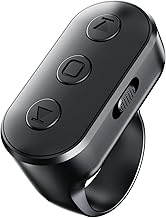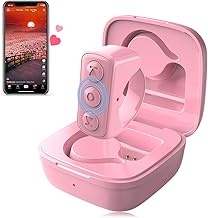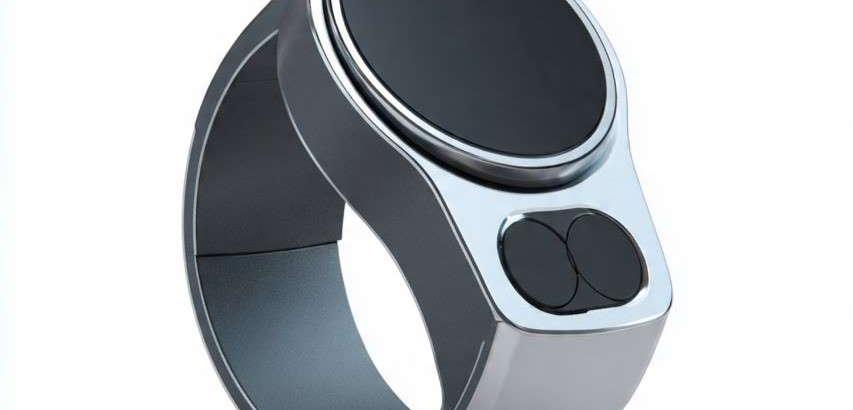A Remote Scrolling Ring is a compact, portable input device designed to provide intuitive and ergonomic scrolling control for computers, smartphones, tablets, and other compatible devices from a distance. It functions as a specialized remote control, with its primary and most distinctive feature being a rotating ring that translates circular finger motion into precise vertical or horizontal scrolling on a screen.
Core Concept and How It Works
The fundamental principle is to decouple the act of scrolling from a traditional mouse, touchpad, or touchscreen, offering a more natural and dedicated control method.
The Ring Mechanism: At the heart of the device is a physical ring that can be smoothly rotated clockwise and counter-clockwise. This ring is not a continuous spin dial but is designed for finite, precise rotations, often with a subtle tactile or haptic feedback.
Sensors: Inside the device, an optical or magnetic encoder detects the rotation, speed, and acceleration of the ring.
Connectivity: The device connects to a host (e.g., a laptop, media PC, smartphone) via a wireless protocol, most commonly Bluetooth Low Energy (BLE), or sometimes a proprietary 2.4GHz RF dongle for ultra-low latency.
Software & Drivers: The device's movements are translated into standard scrolling commands (like a mouse wheel) by its firmware. Companion software or built-in drivers allow for extensive customization of the ring's behavior.
Key Components and Features
The Scrolling Ring:
Tactile Feedback: High-end models offer customizable haptic feedback, simulating the feeling of notches or a smooth, inertial spin.
Inertial Scrolling: Similar to a touch-sensitive scroll wheel, a quick flick of the ring can initiate a long, inertial scroll that slows down gradually.
Press-to-Click Function: The ring itself is often a button, allowing you to press it to perform a primary click, an "Enter" command, or a custom-defined action.
Additional Buttons and Controls:
Most scrolling rings include supplementary buttons (e.g., Back/Forward, Volume Up/Down, Play/Pause, application switcher).
These buttons are fully programmable via companion software, allowing them to trigger keystrokes (e.g., Ctrl+C), macros, or system commands.
Connectivity and Power:
Wireless: Primarily Bluetooth for universal compatibility. Some include a USB-C port for charging and potentially a wired mode.
Battery: Rechargeable lithium-ion battery, offering weeks or months of use on a single charge due to its low-power design.
Companion Software:
This is a critical component that unlocks the device's full potential. It allows users to:
Re-program all buttons and the ring press.
Adjust scrolling behavior: Set scroll speed, enable/disable inertial scrolling, and reverse scroll direction.
Create Application-Specific Profiles: The device can automatically switch its button mappings and scroll behavior depending on the active application (e.g., different settings for Photoshop, Chrome, and PowerPoint).
Primary Use Cases and Advantages
Media Consumption and Presentation:
Advantage: Acts as a superior media remote. You can scroll through web pages, adjust volume, and play/pause videos from your couch without a clumsy laptop touchpad or a large keyboard.
Ideal for: Watching movies, browsing on a smart TV or projector, controlling slides in PowerPoint or Keynote presentations from anywhere in the room.
Creative and Productivity Workflows:
Advantage: Offers ergonomic benefits and precision for creative tasks.
Ideal for:
Photo/Video Editing: Scroll through timelines in video editing software with fine control. Zoom in and out in Photoshop by mapping the ring to the zoom function.
Music Production: Scroll through tracks and adjust mixer levels.
Coding: Scroll through long lines of code effortlessly.
Ergonomics and Accessibility:
Advantage: Reduces repetitive strain on the wrist and thumb associated with constant mouse-wheel scrolling or trackpad two-finger scrolling.
Ideal for: Users with carpal tunnel syndrome, arthritis, or anyone looking for a more comfortable computing posture. It can be used ambidextrously and held in a relaxed position.
Gaming:
Advantage: Can be mapped to specific in-game actions, such as switching weapons, adjusting camera zoom, or managing inventory, providing a unique control scheme.
Comparison with Traditional Devices
| Feature | Remote Scrolling Ring | Traditional Mouse | Touchpad |
|---|---|---|---|
| Scrolling Method | Dedicated rotating ring | Integrated wheel (often thumb-operated) | Two-finger gesture |
| Portability & Range | Excellent; operates away from the computer | Poor; tethered to desk | Poor; integrated into laptop |
| Ergonomics | Can be used in a relaxed, neutral grip | Can cause wrist strain with repetitive scrolling | Can cause "trackpad thumb" |
| Primary Focus | Scrolling & media control | Cursor control & general input | Cursor control & gestures on-device |
| Customization | High (per-application profiles) | Moderate | Low to Moderate |
Limitations and Considerations
No Cursor Control: Its biggest limitation is the lack of a pointing function. It is designed to complement a mouse or touchpad, not replace it.
Niche Product: It solves a specific problem very well but is not an essential device for the average user.
Learning Curve: Some users may need time to adapt to the separated control scheme.
Battery Dependency: As a wireless device, it requires periodic charging.
The Remote Scrolling Ring is a sophisticated and highly specialized input device that excels in scenarios where comfortable, precise, and remote scrolling is a priority. By focusing on a single, intuitive input method—the rotating ring—it enhances media consumption, creative work, and presentations while offering significant ergonomic benefits. For users who find themselves constantly scrolling or seeking a more streamlined control setup for their digital life, it represents a unique and valuable tool that fills a gap left by conventional peripherals.
 |  |  |
 |  |  |
